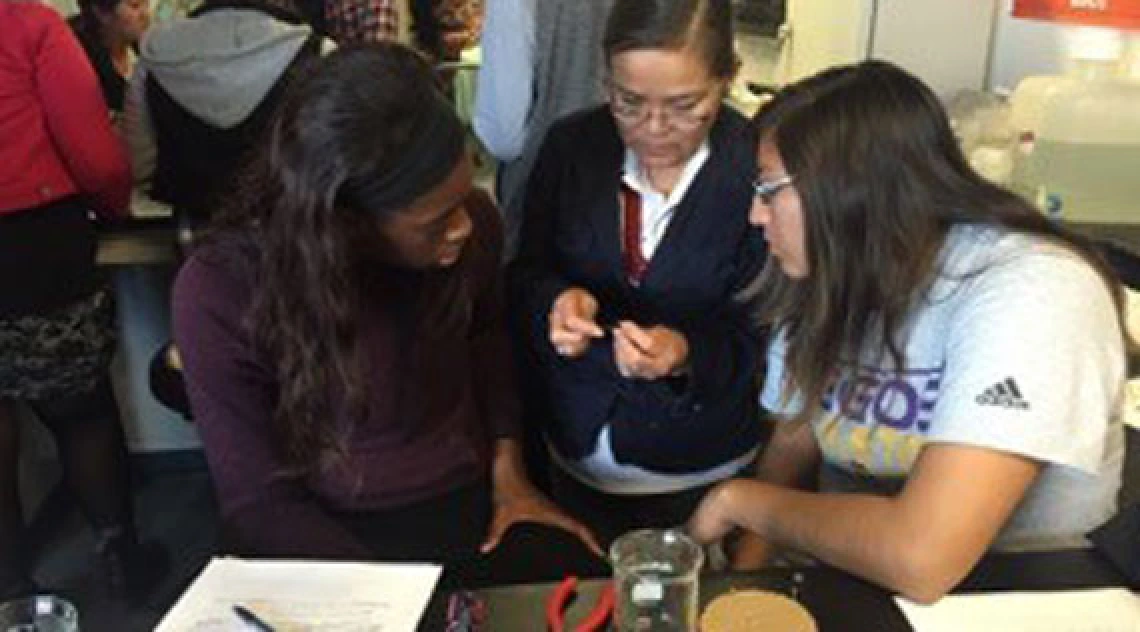SRP Community Engagement Core Extends Outreach Efforts in Tribal Communities

The Community Engagement Core (CEC) of the University of Arizona Superfund Research Program (UA SRP) has been working to develop and pilot education modules on diverse mining topics for Arizona tribal colleges. These colleges serve the communities living in close proximity to some of the UA SRP research mining sites, and also act as important conduits to connect with and educate members of these local communities.

The modules are based on transferable training modules originally developed for community health workers in Mexico, which have been restructured to meet the needs of Native American communities. On November 10, 2015, UA SRP investigator Dr. Karletta Chief and trainee Kimberly Danny traveled to the Tohono O’odham Community College, located in Sells, Arizona, to lead a hands-on activity involving copper electrolysis, a process in which impure copper is refined to produce pure copper. This hands-on activity is a component of the CEC’s Copper Mining and Processing educational module. Students worked in pairs to set up an electrolysis experiment and observe how copper is transferred from a penny onto a silver dime. This type of transfer is similar to copper plating in the real life copper refinement process, an industry close to home for many of the students in the class. In recounting her experience in piloting this module, trainee Kimberly Danny said, “The students had a great time creating their own copper electrolysis experiment.”
At a more regional level, the CEC team partnered with Diné College in Shiprock, New Mexico last year to review the relevance of existing mining modules to this community and to develop a new module specific to the mining history of the Navajo Nation. In December of 2015, Dr. Chief travelled to Diné College to lead a hands-on activity on measuring arsenic levels in water for an introductory Environmental Science course, taught by Dr. Shannon Rupert. Dr. Chief said, “The tribal college students enjoyed this hands-on activity and learned about dilution factors of a contaminant. The students related these dilution factors back to the recent Gold King Mine Spill that occurred in their backyard.”

These experiences from 2015 have helped the CEC as we continually refine our efforts and move forward with the most effective ways to connect with our local communities. If you are interested in downloading available modules, please visit our website!

